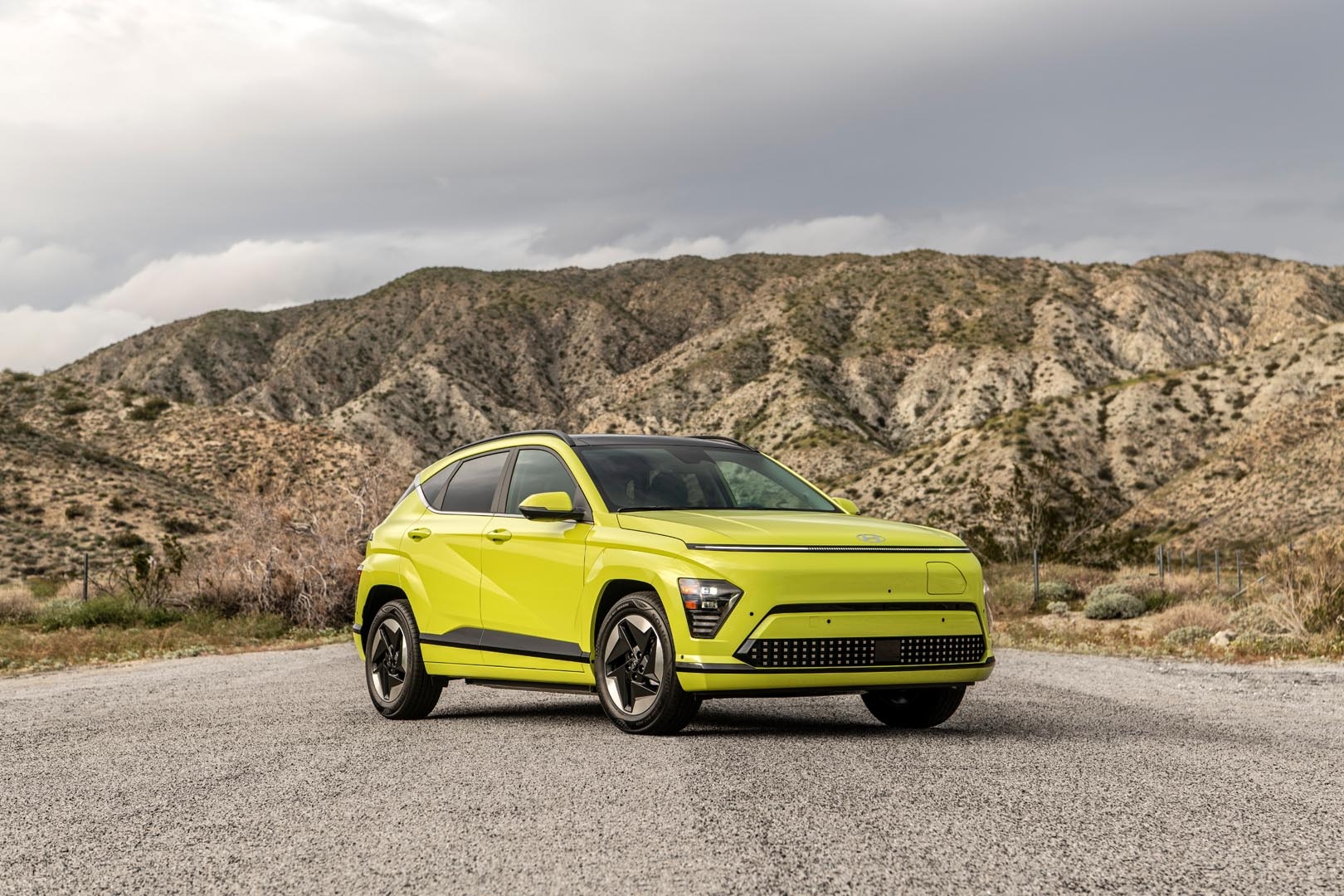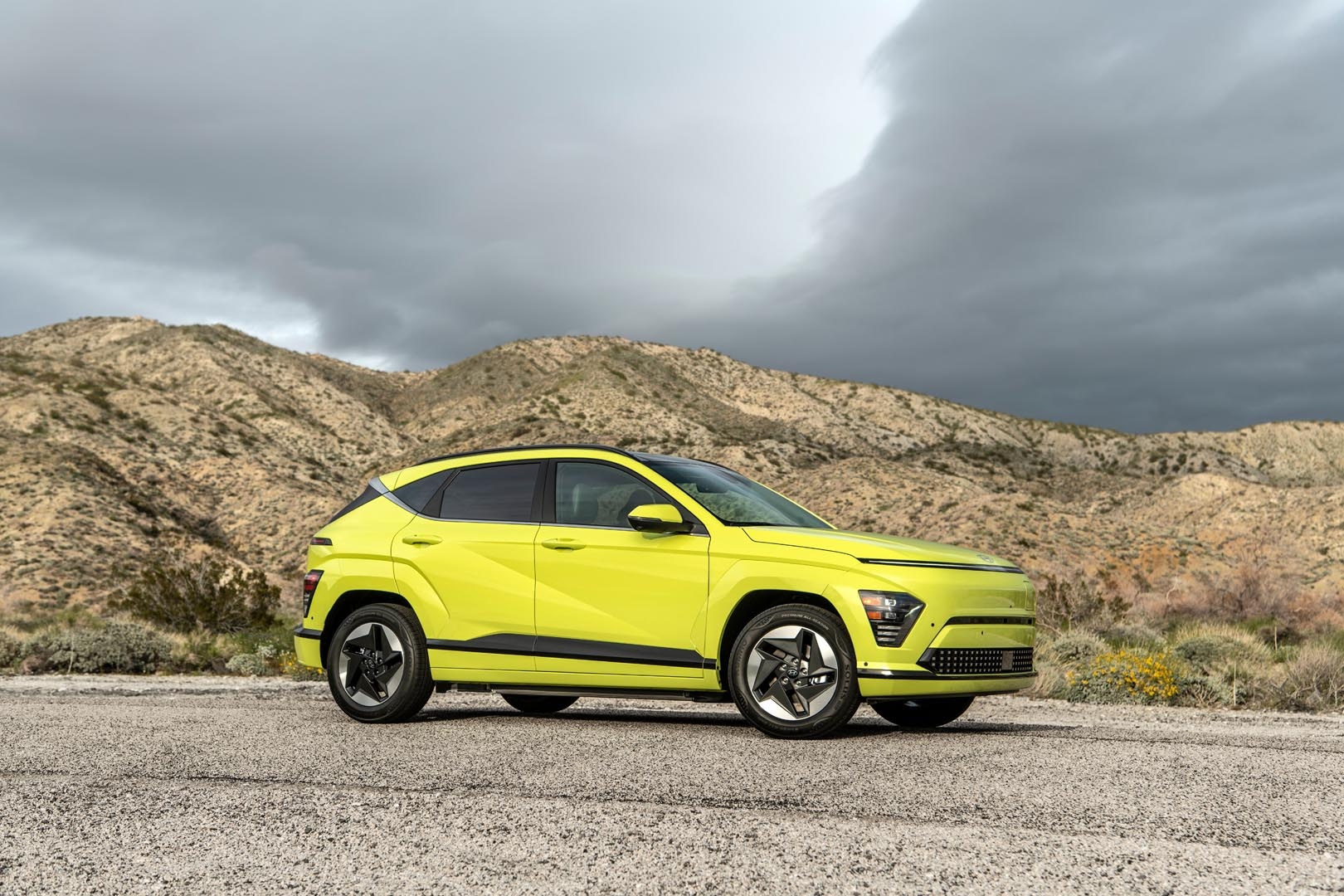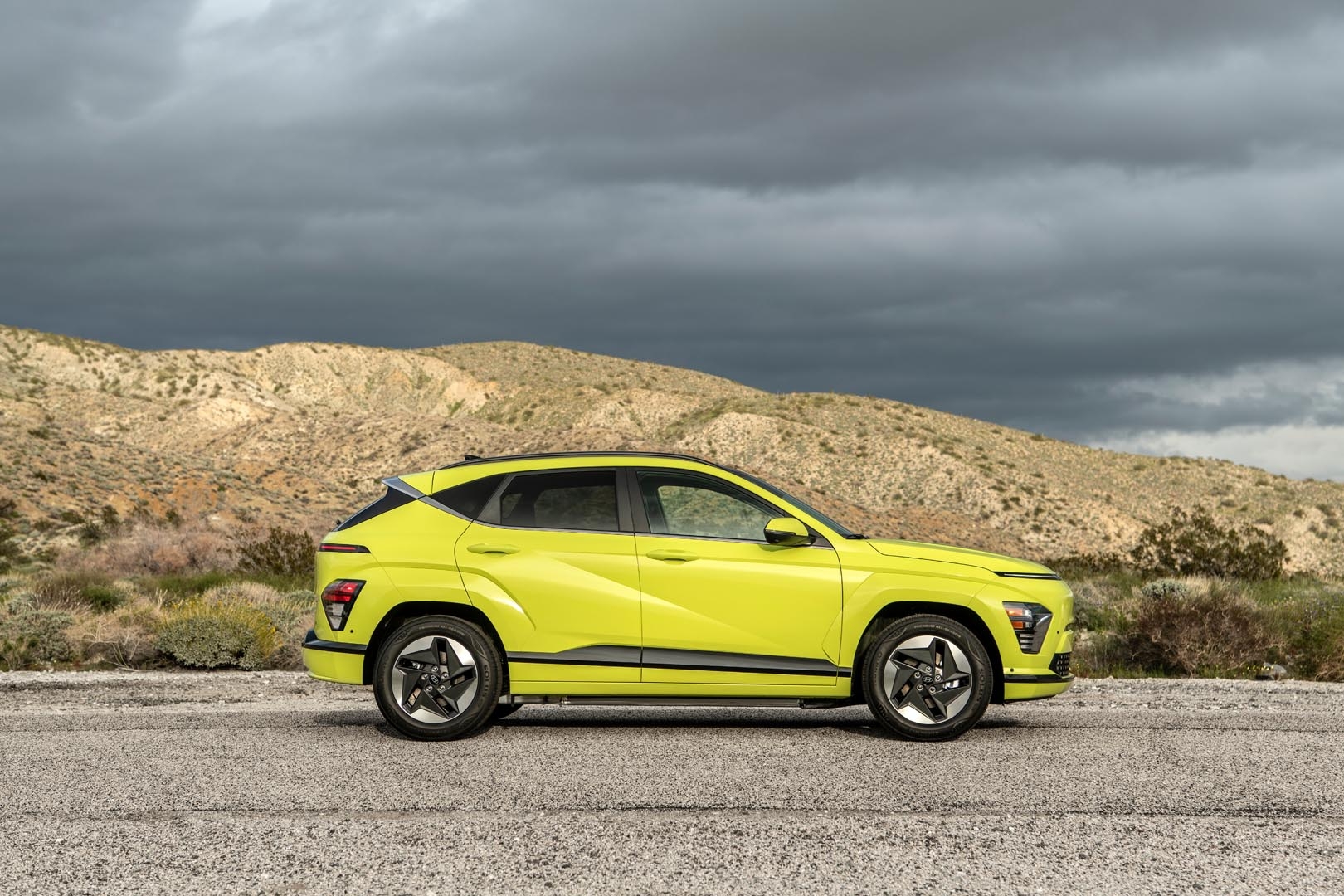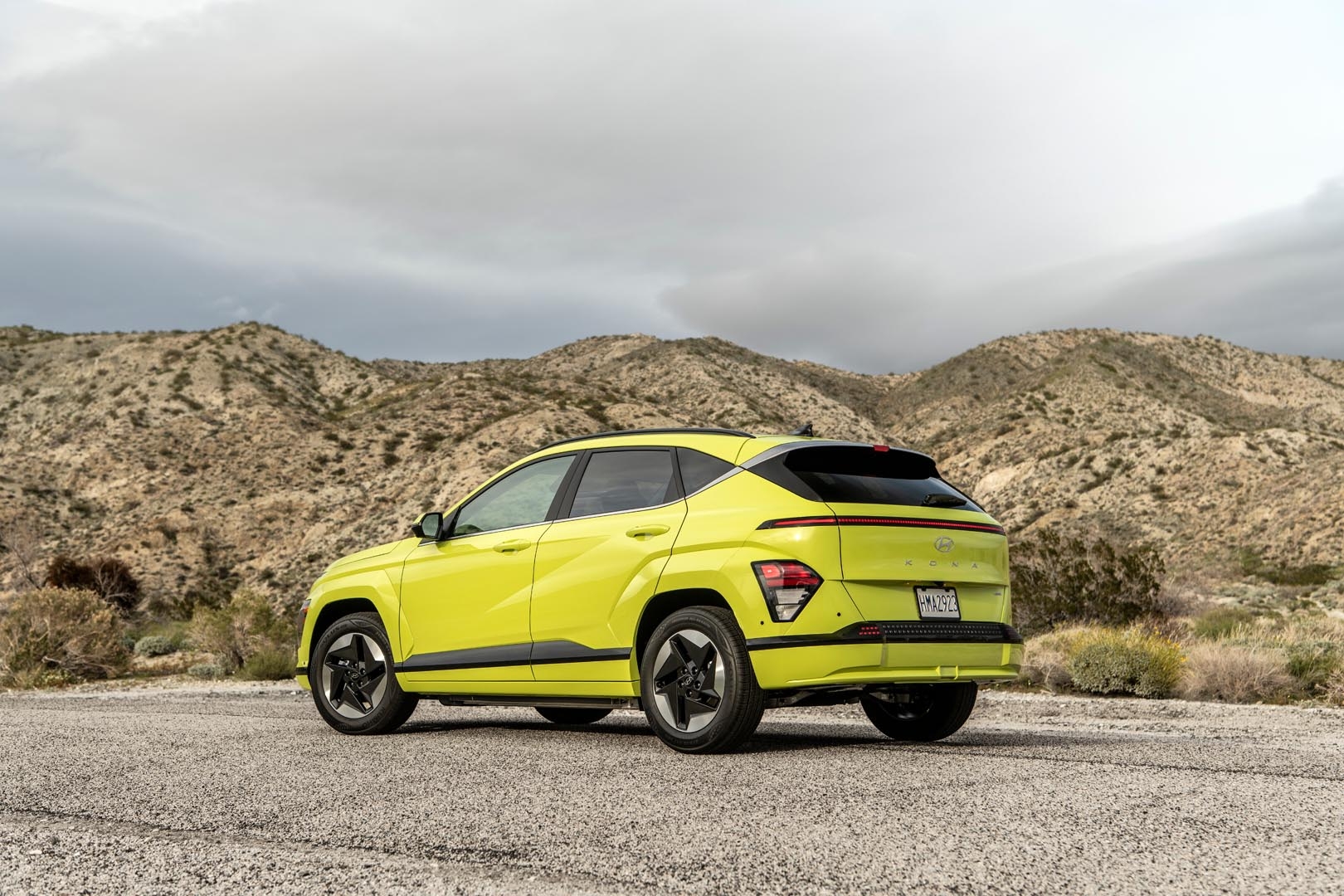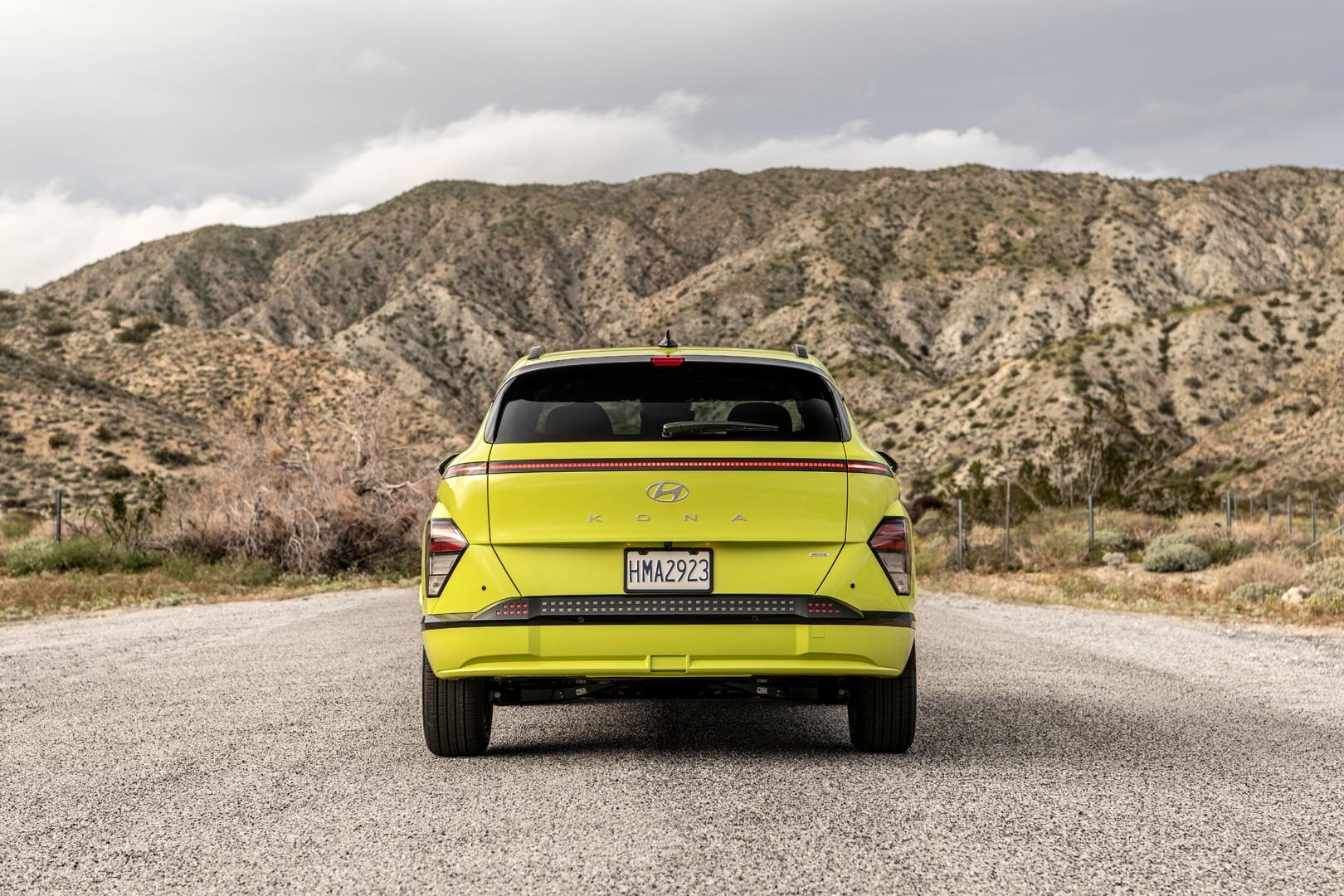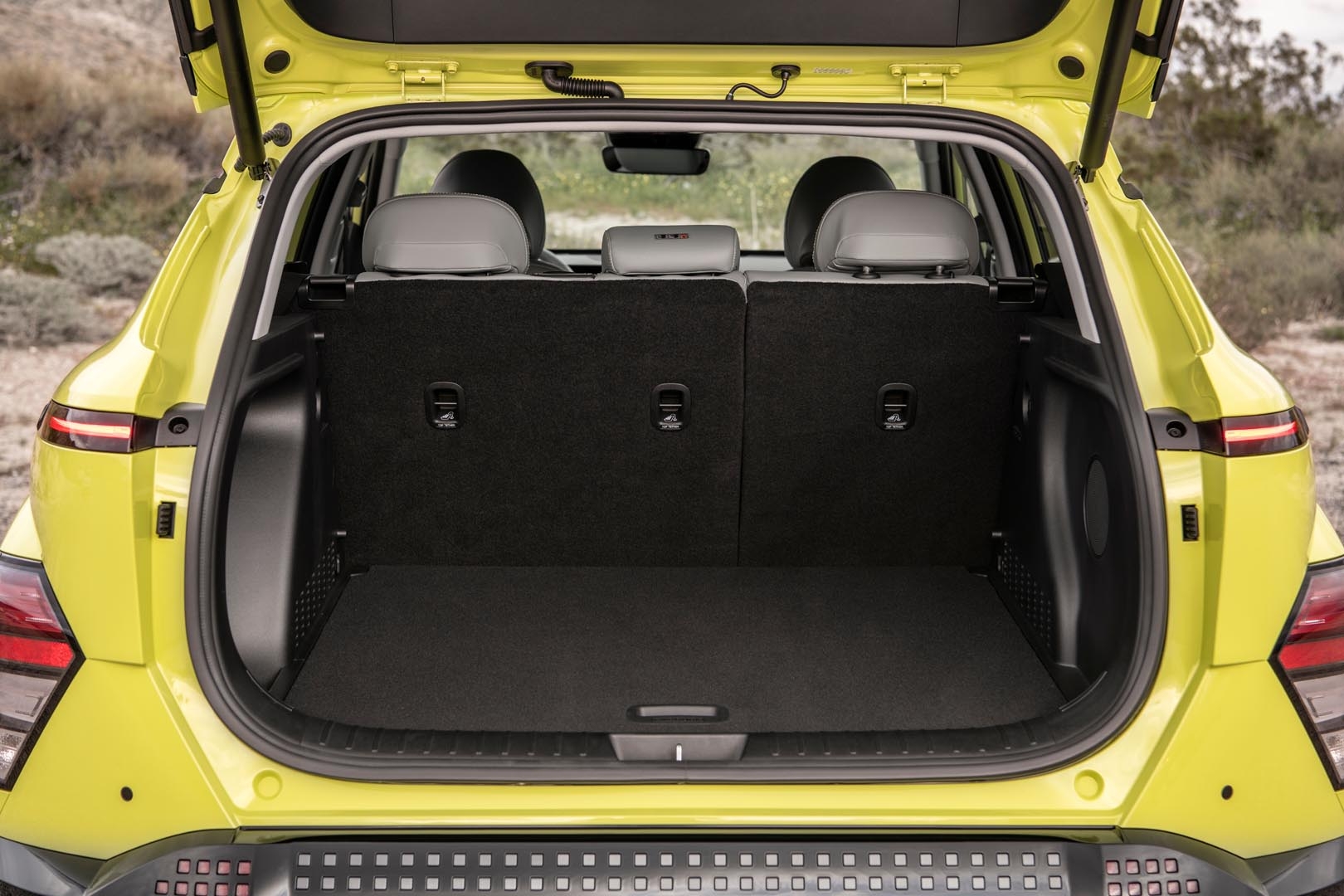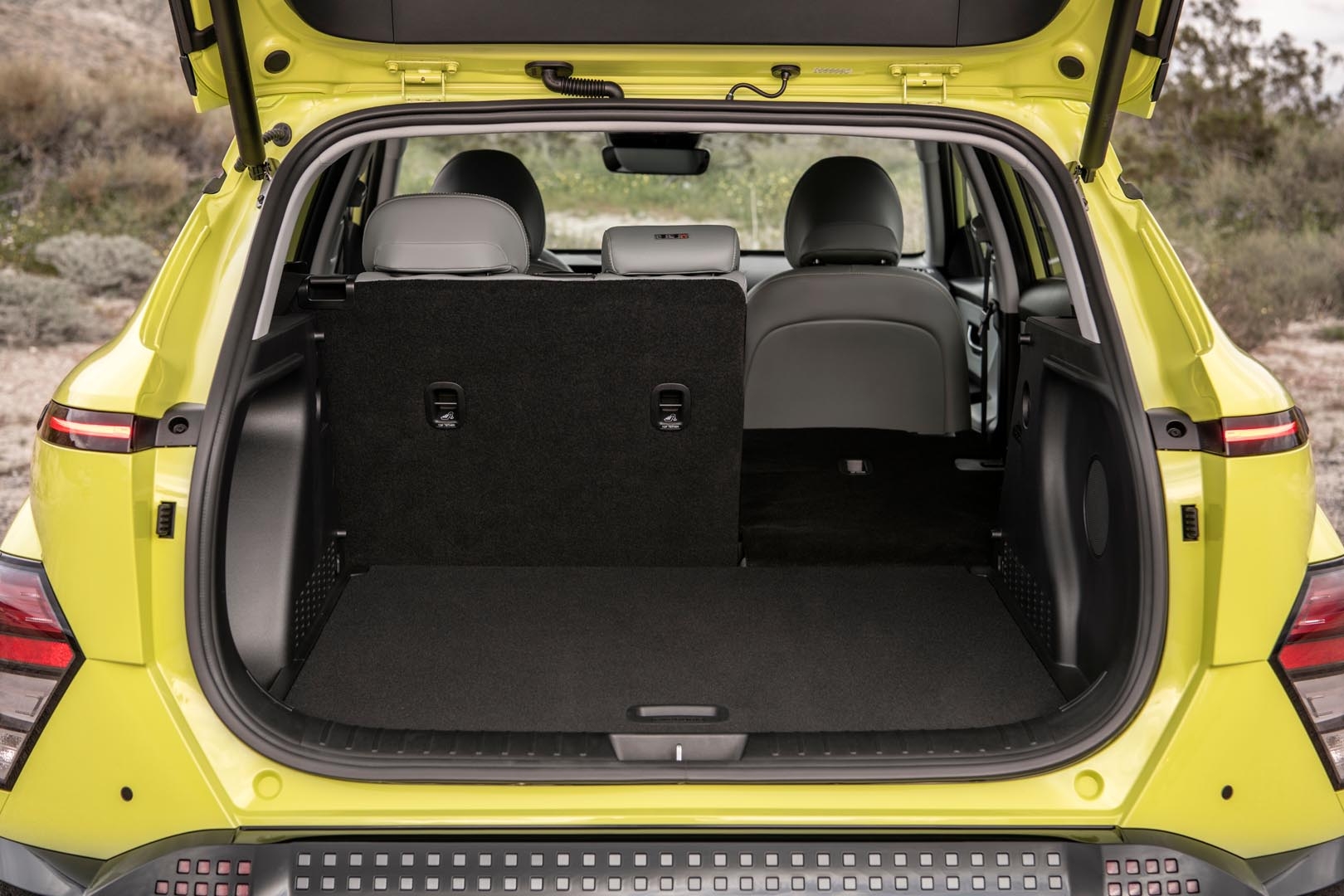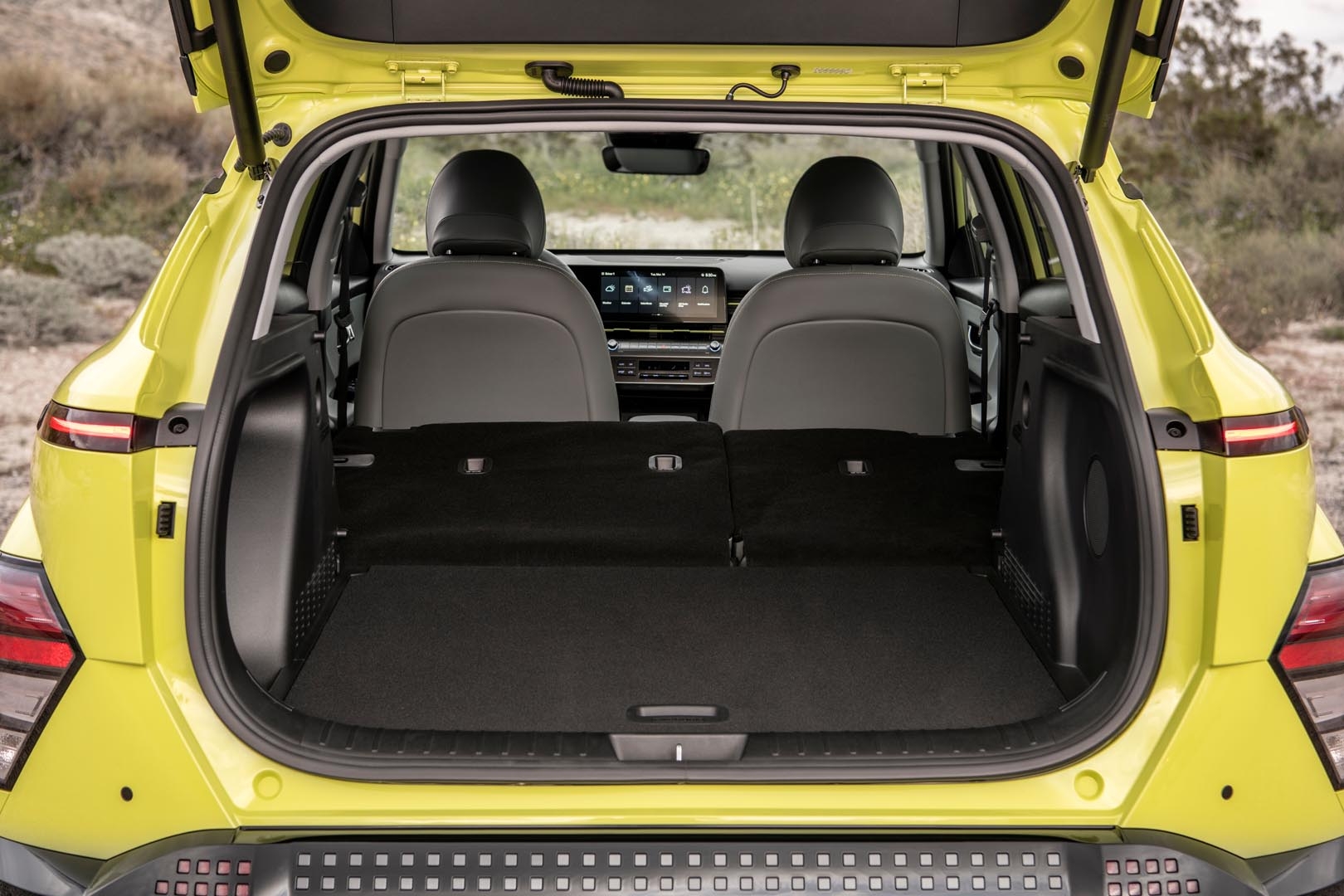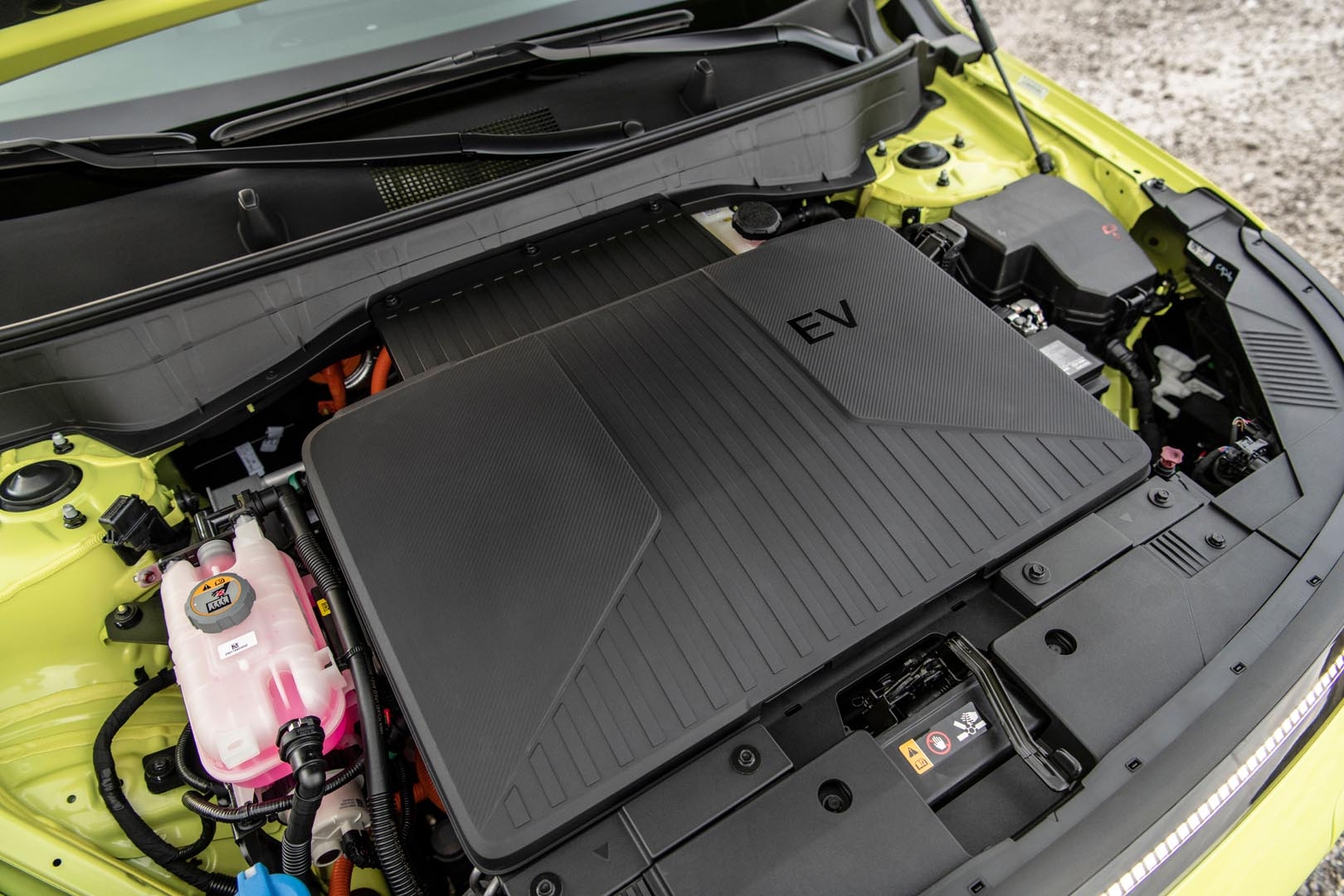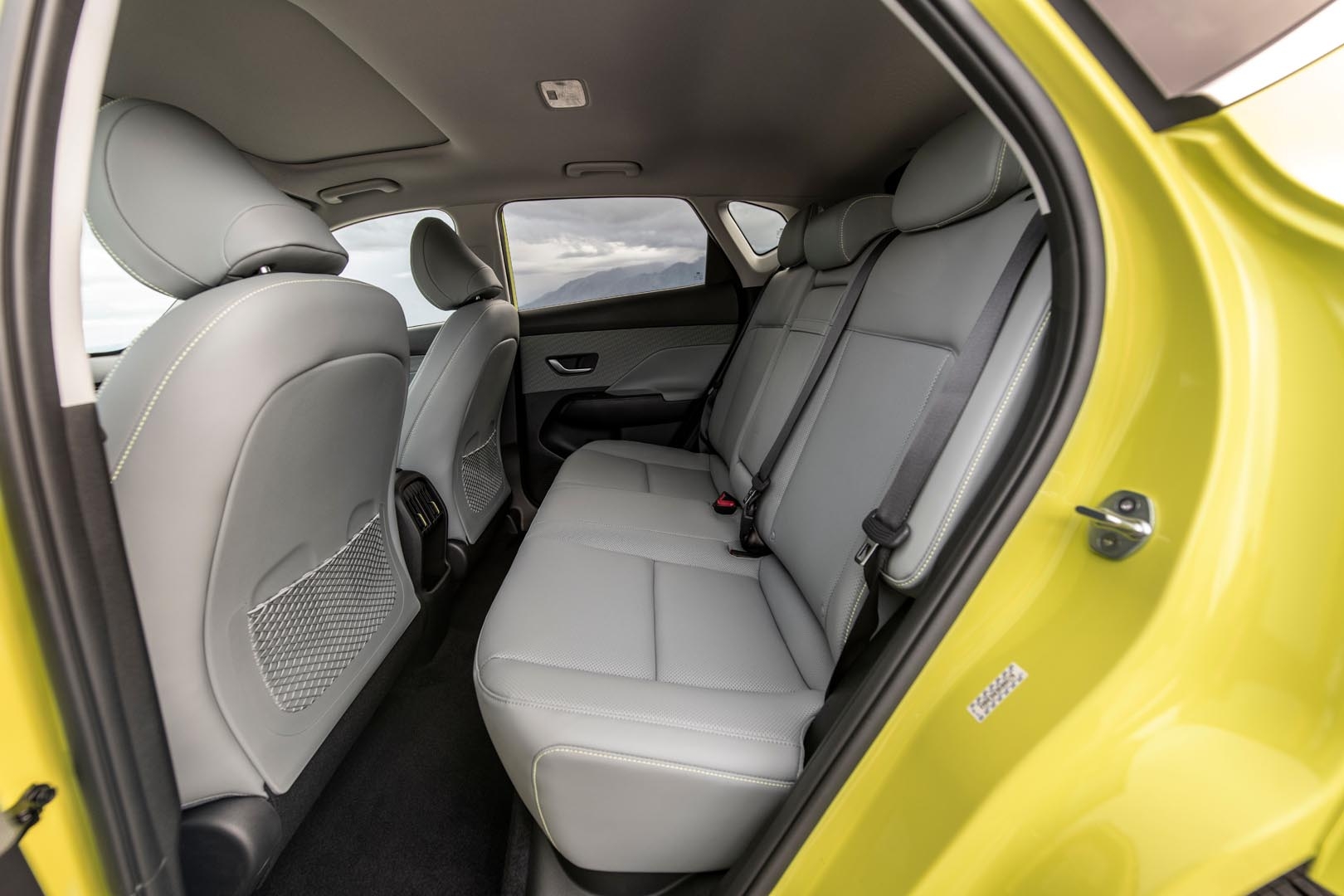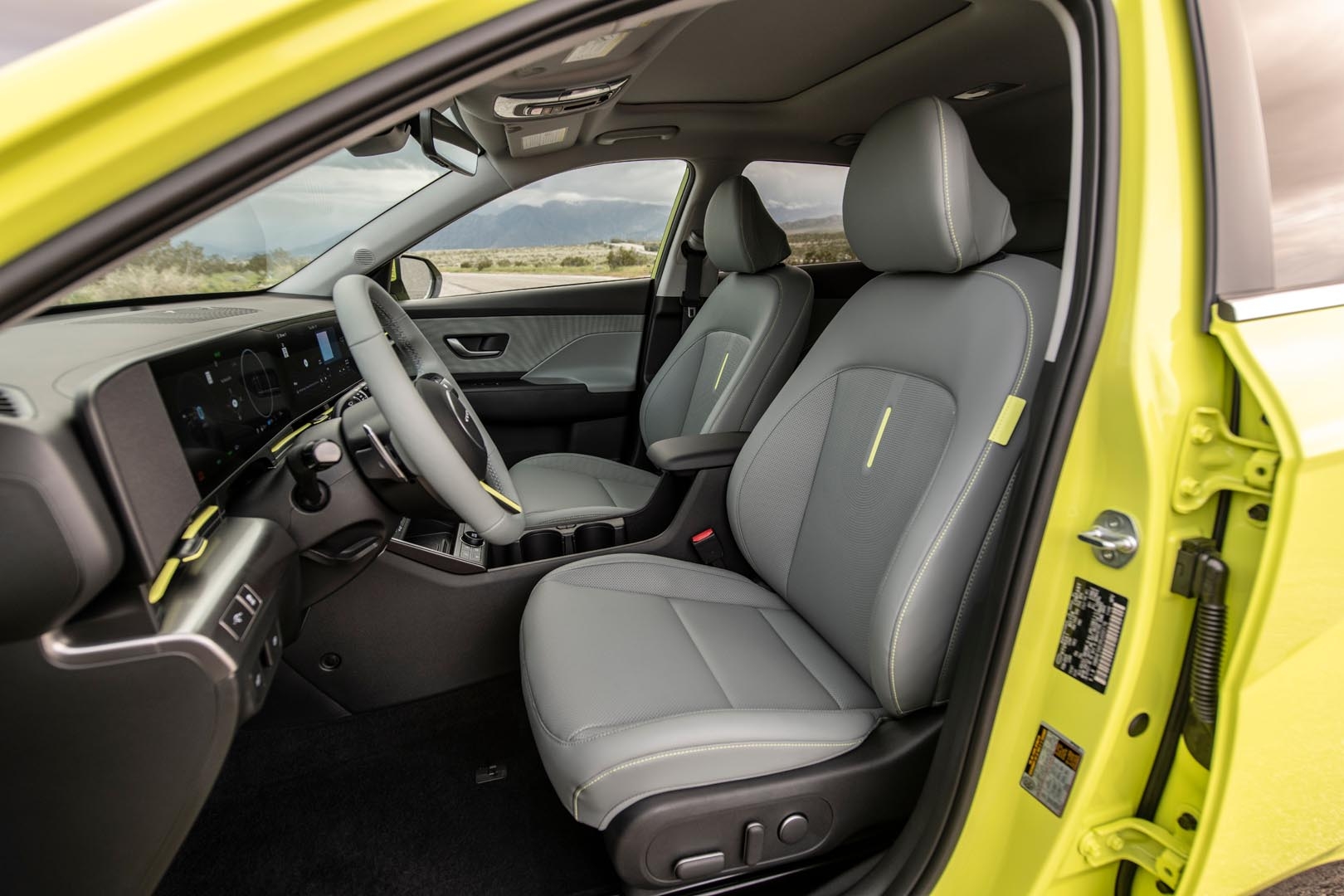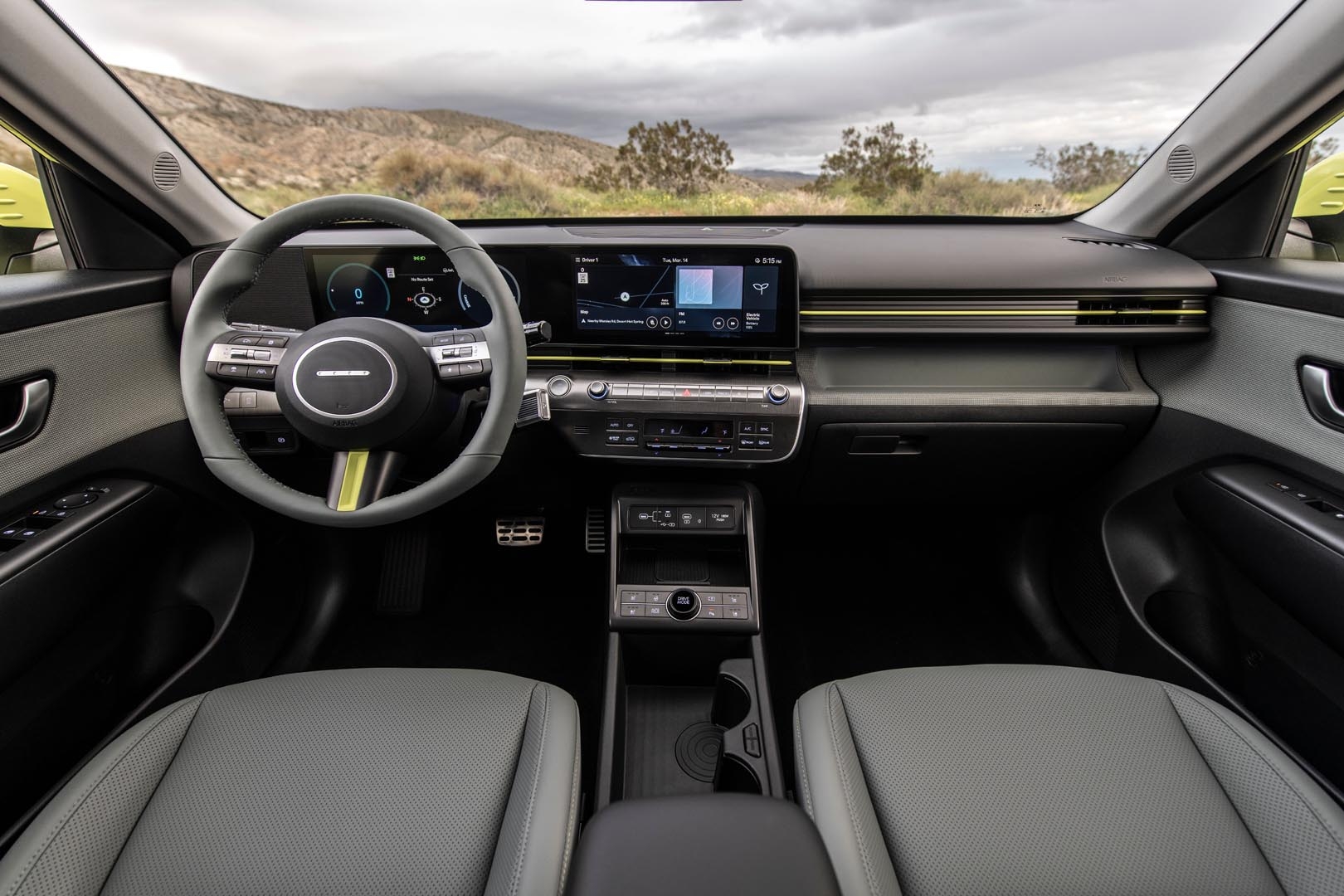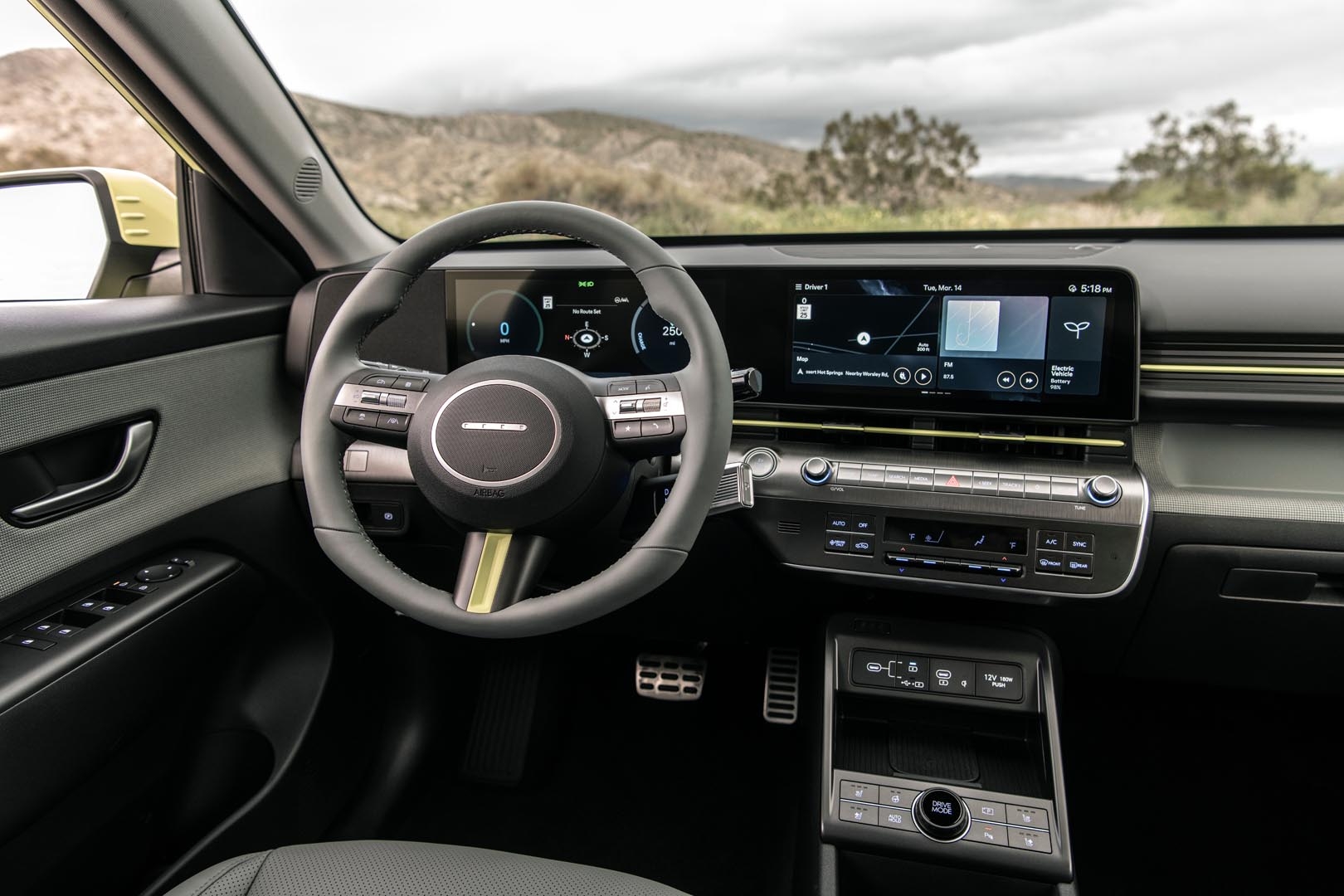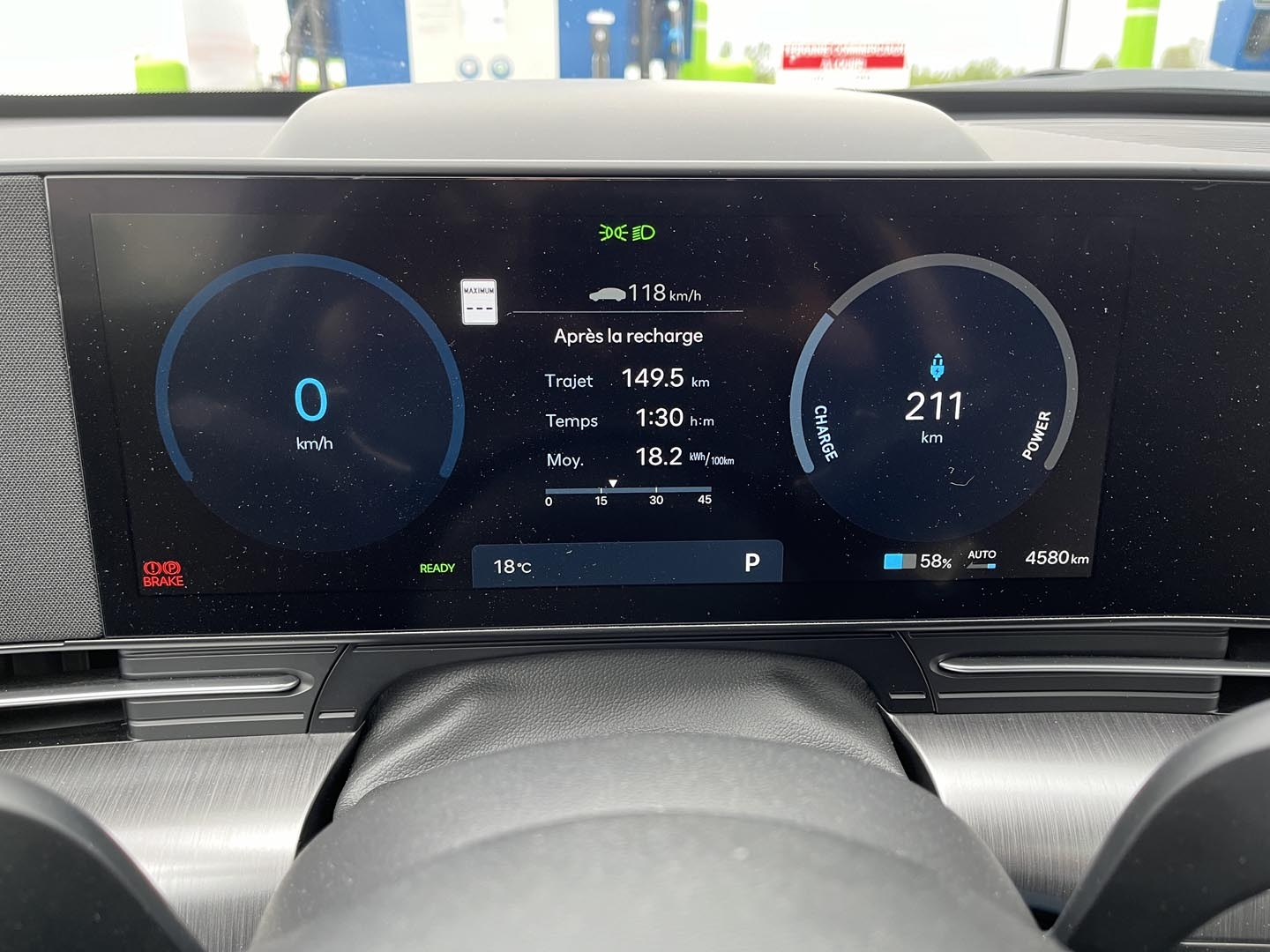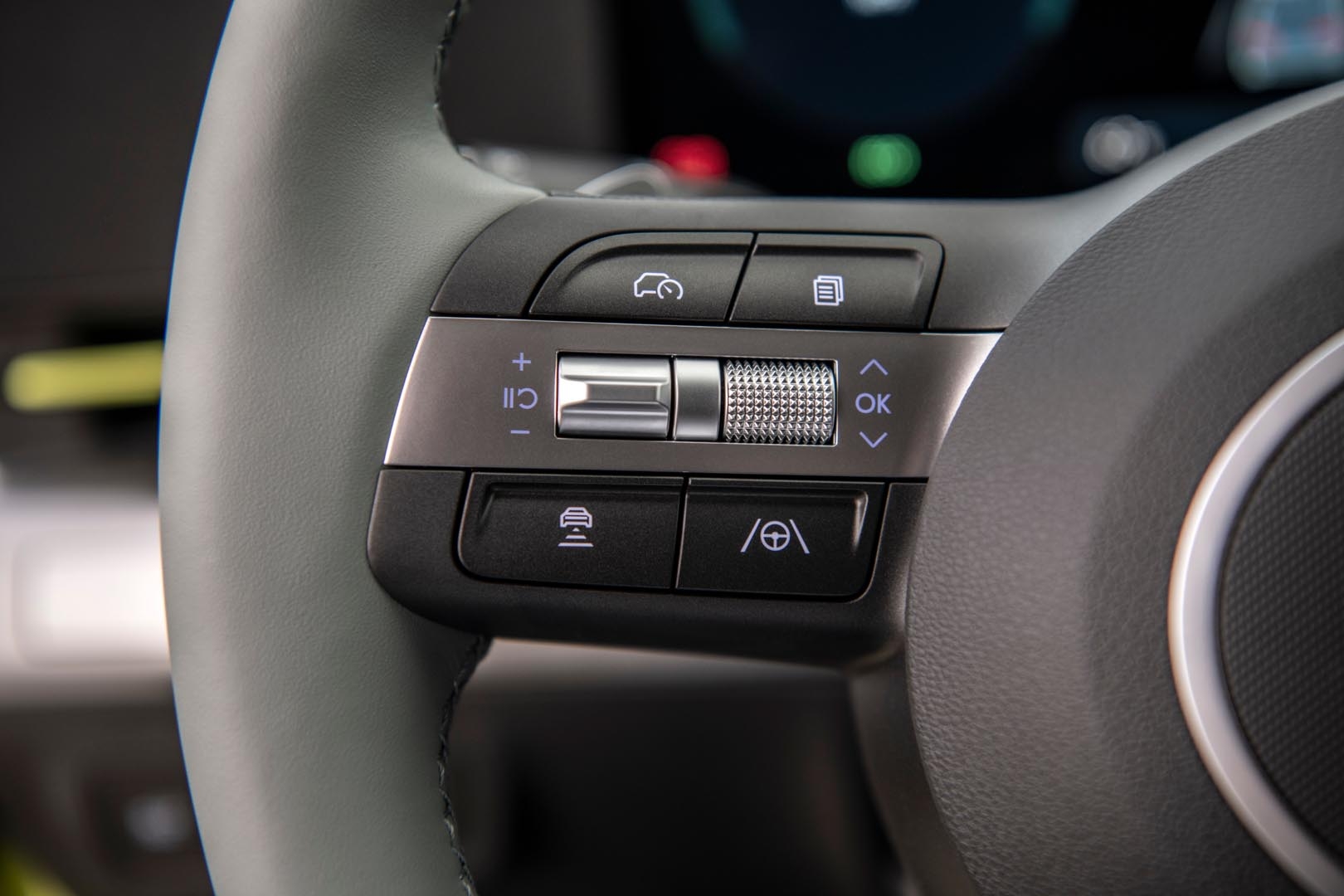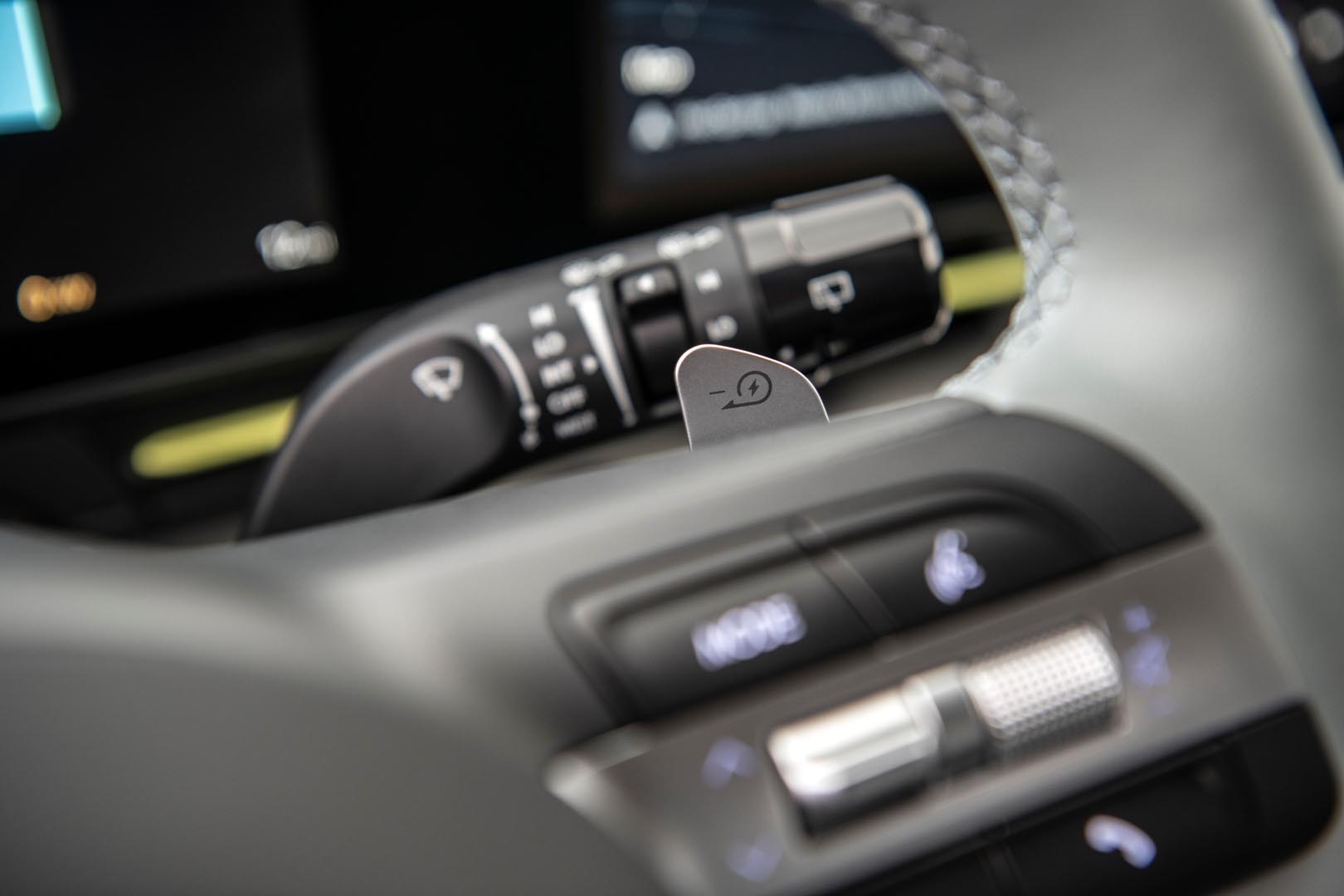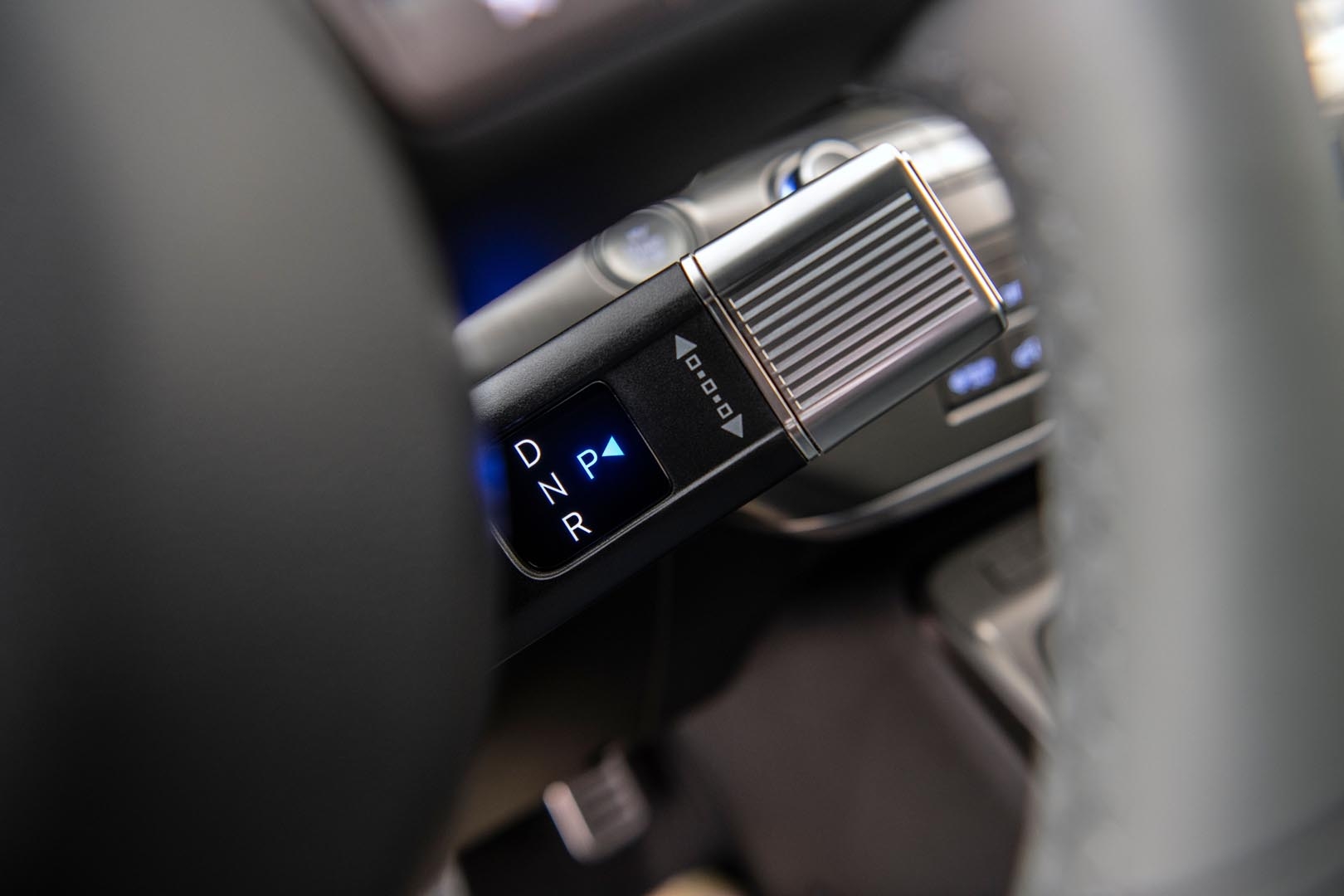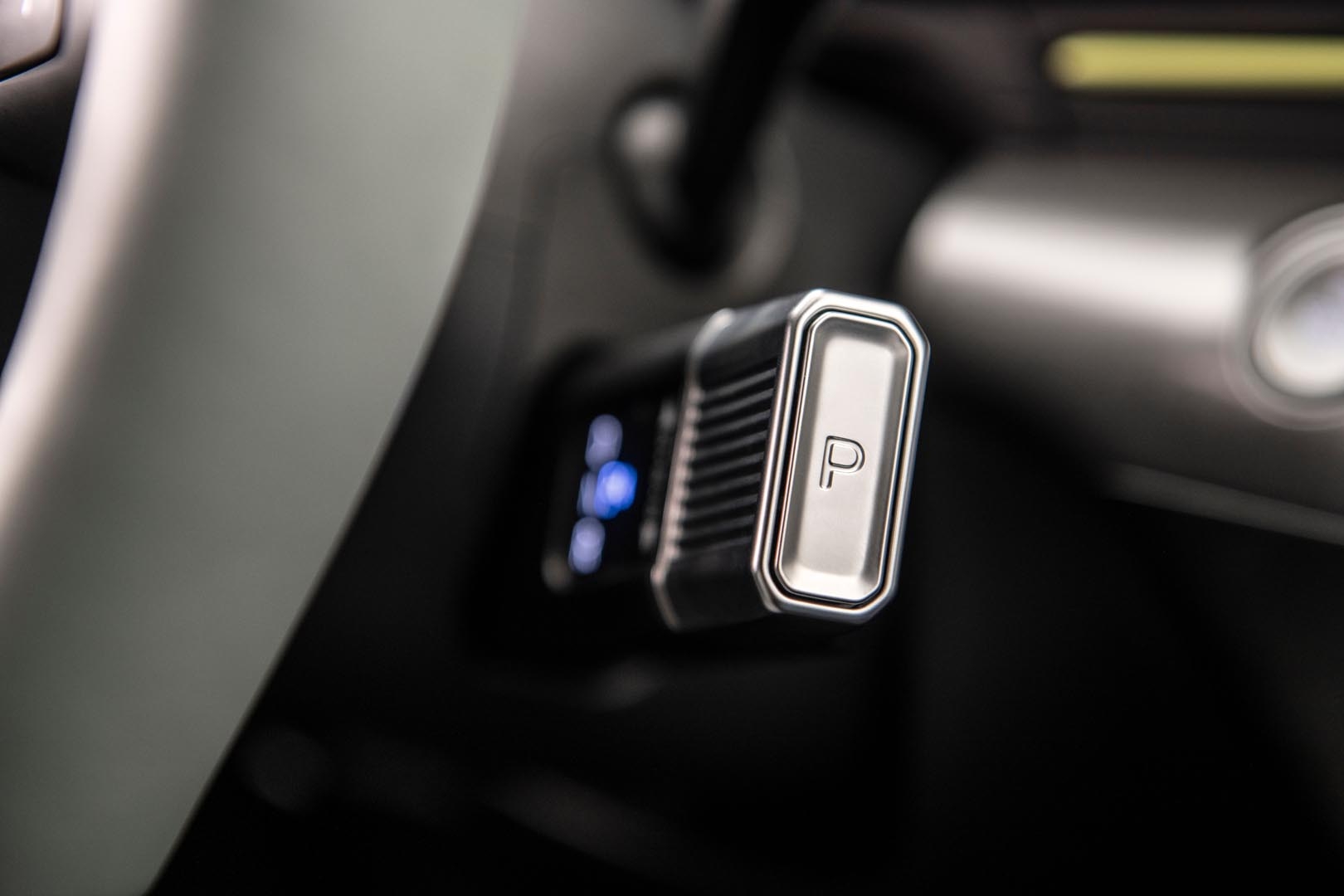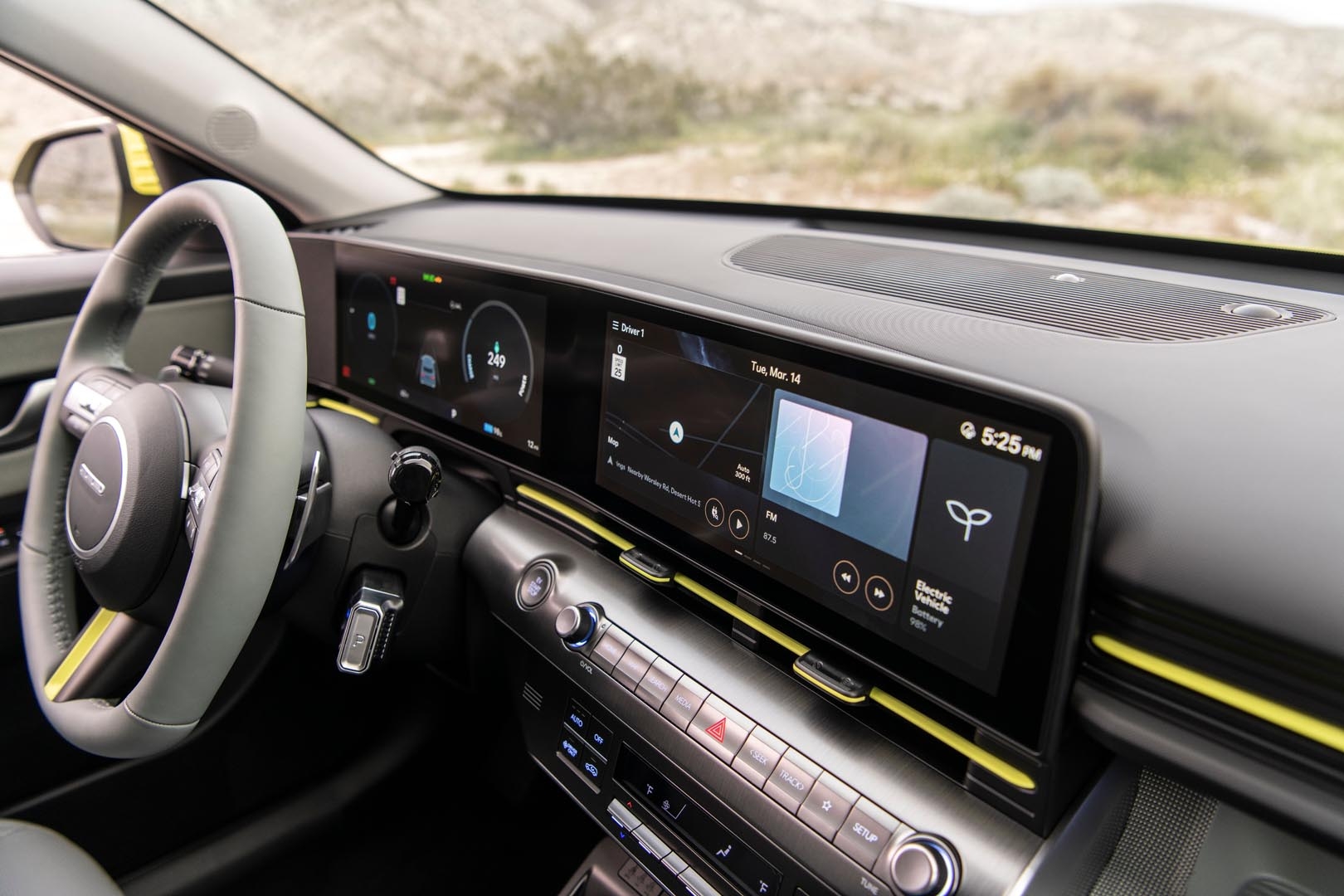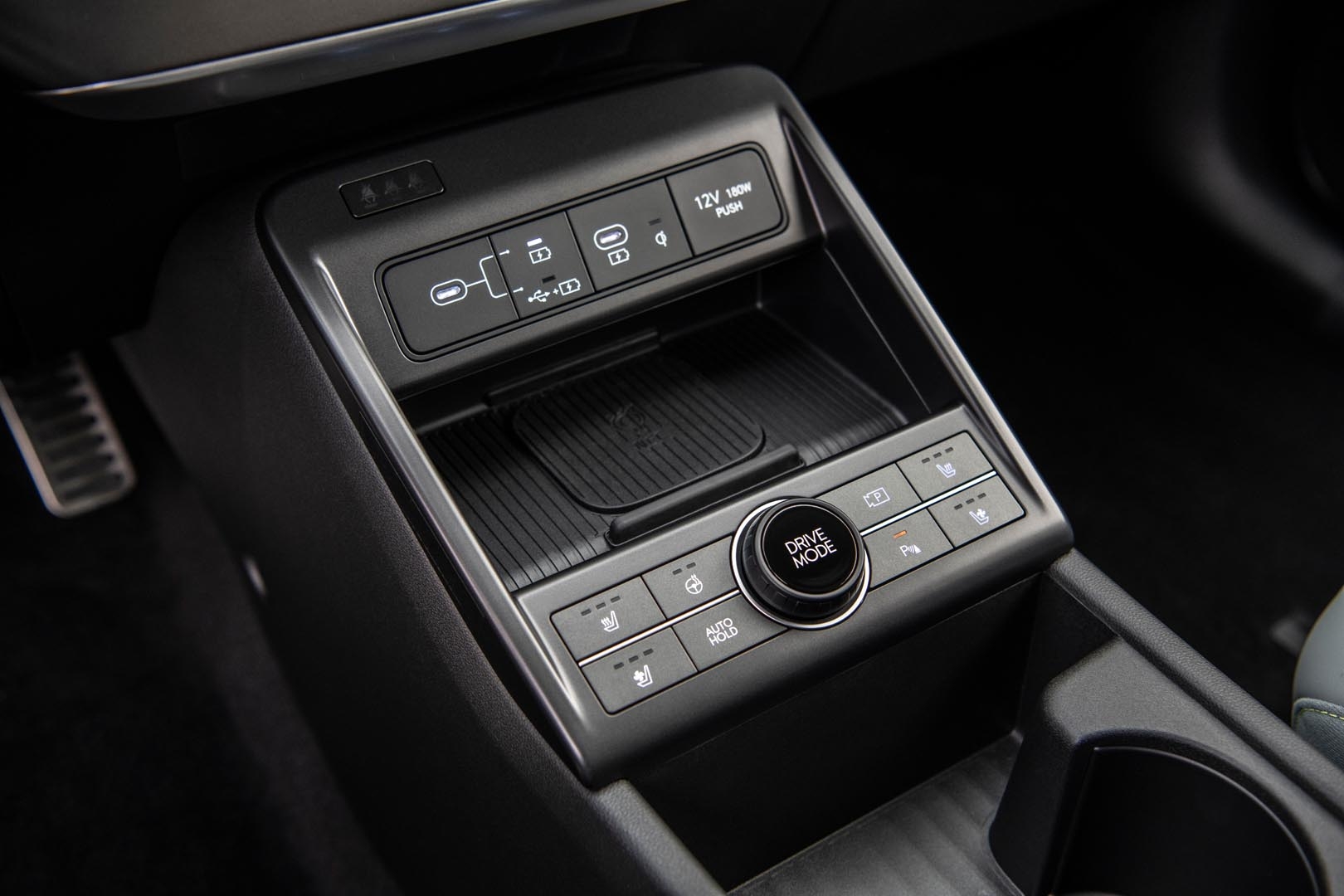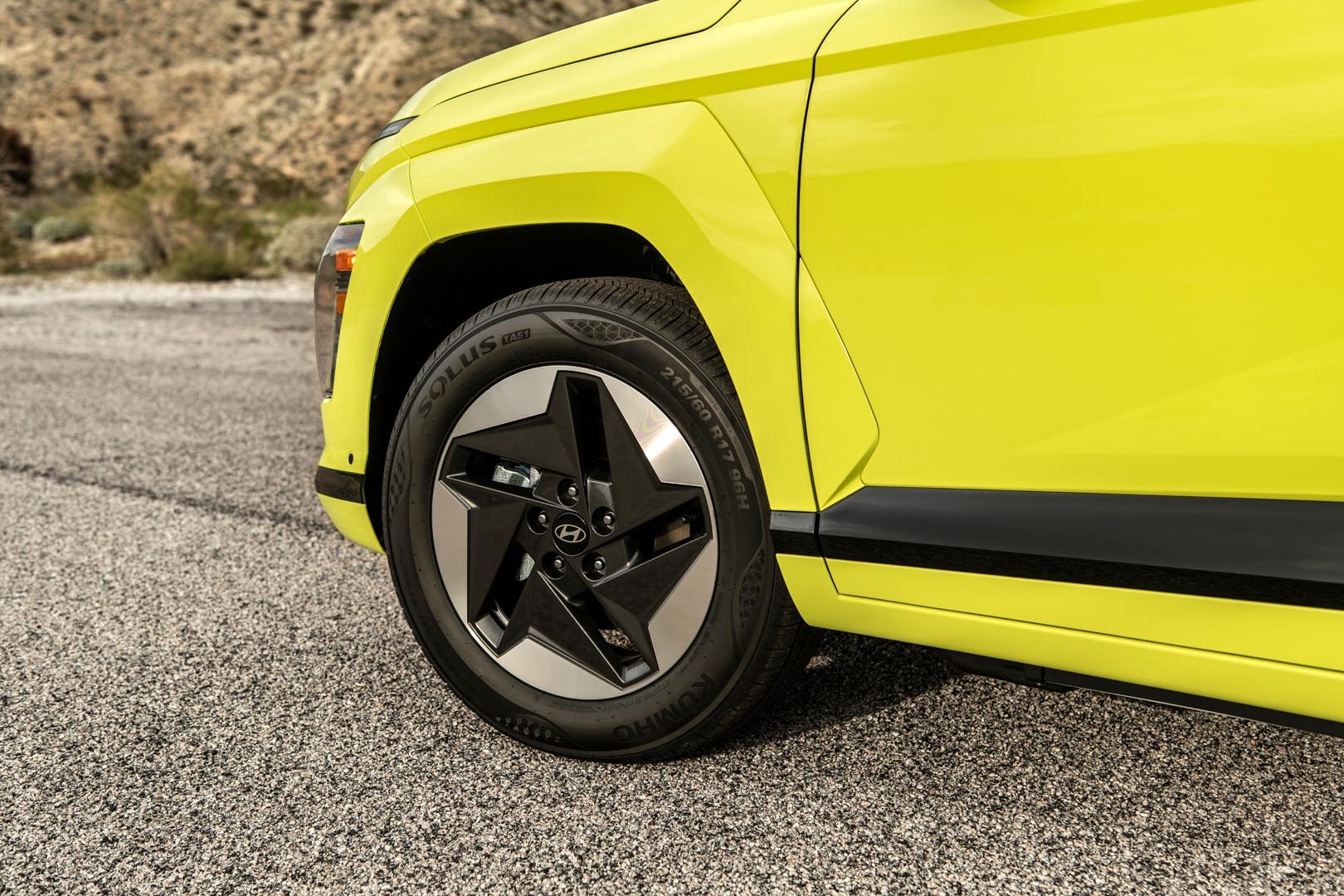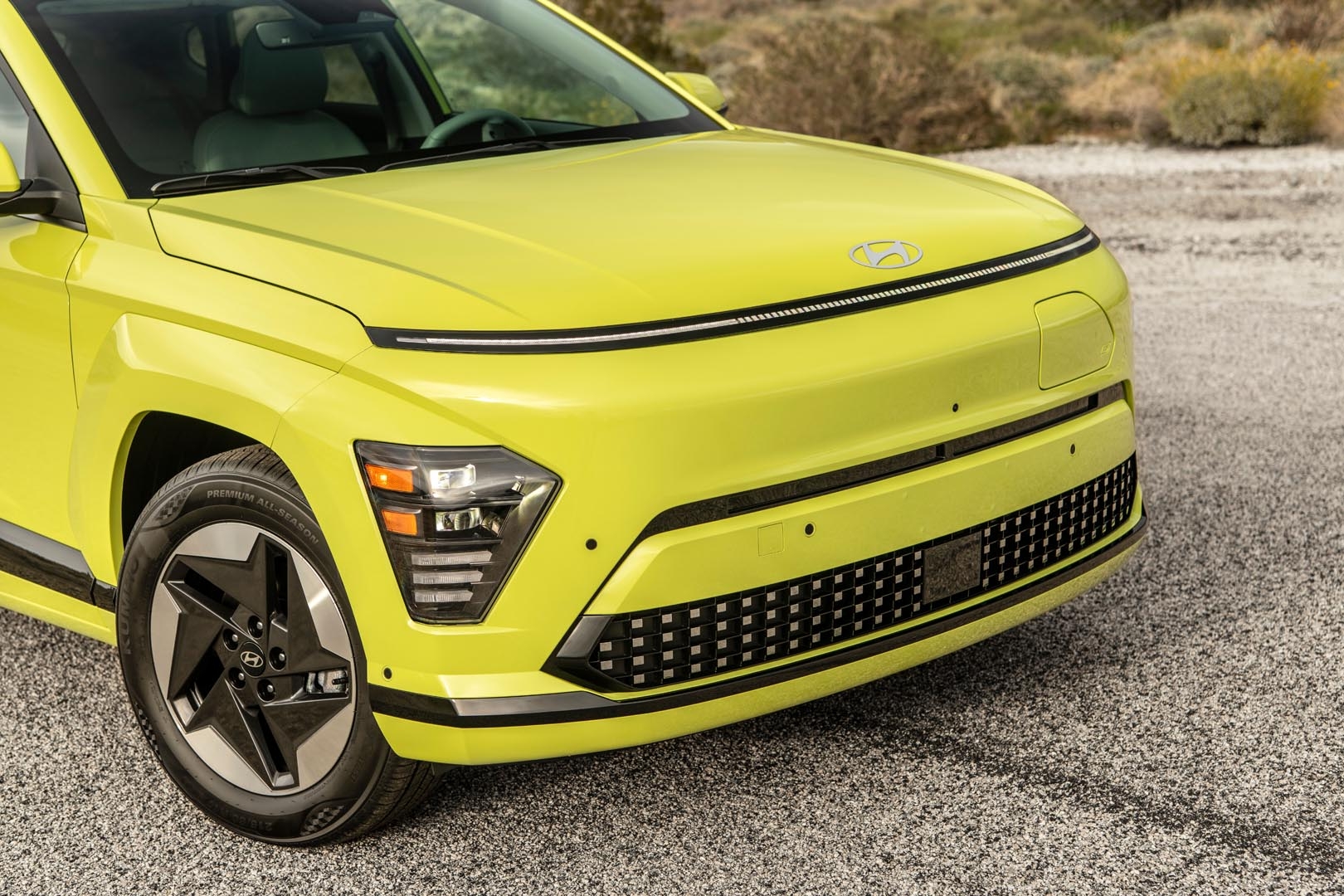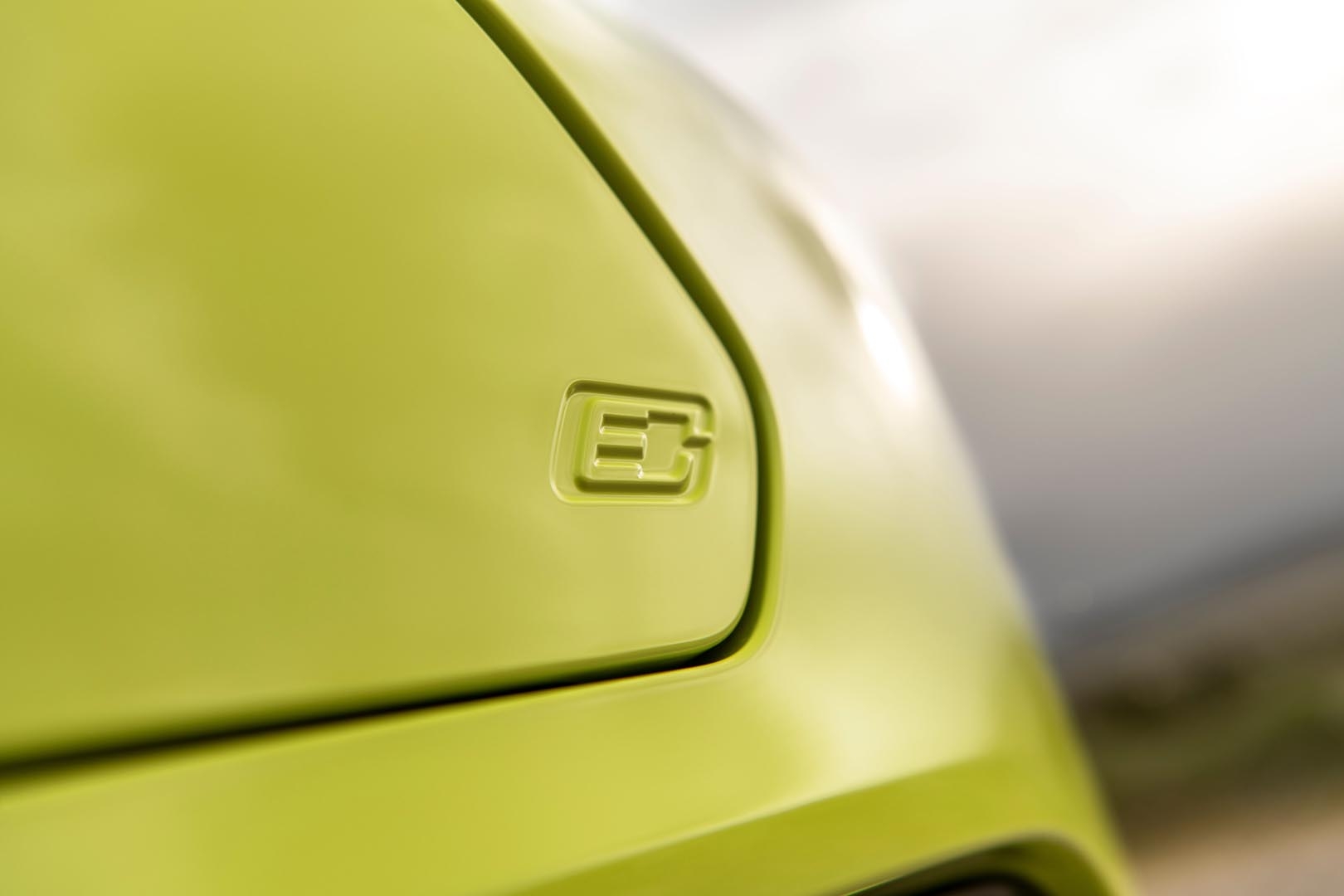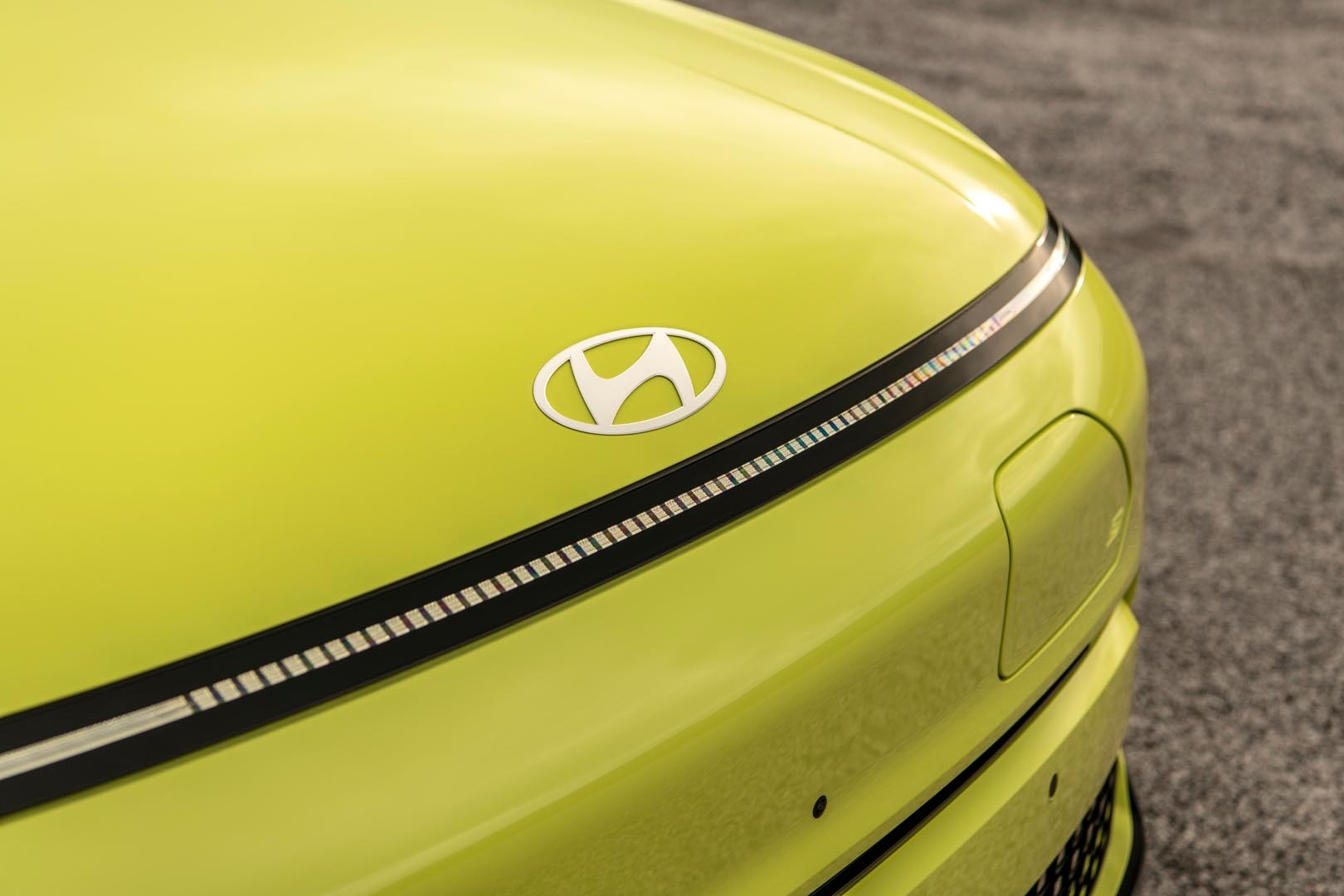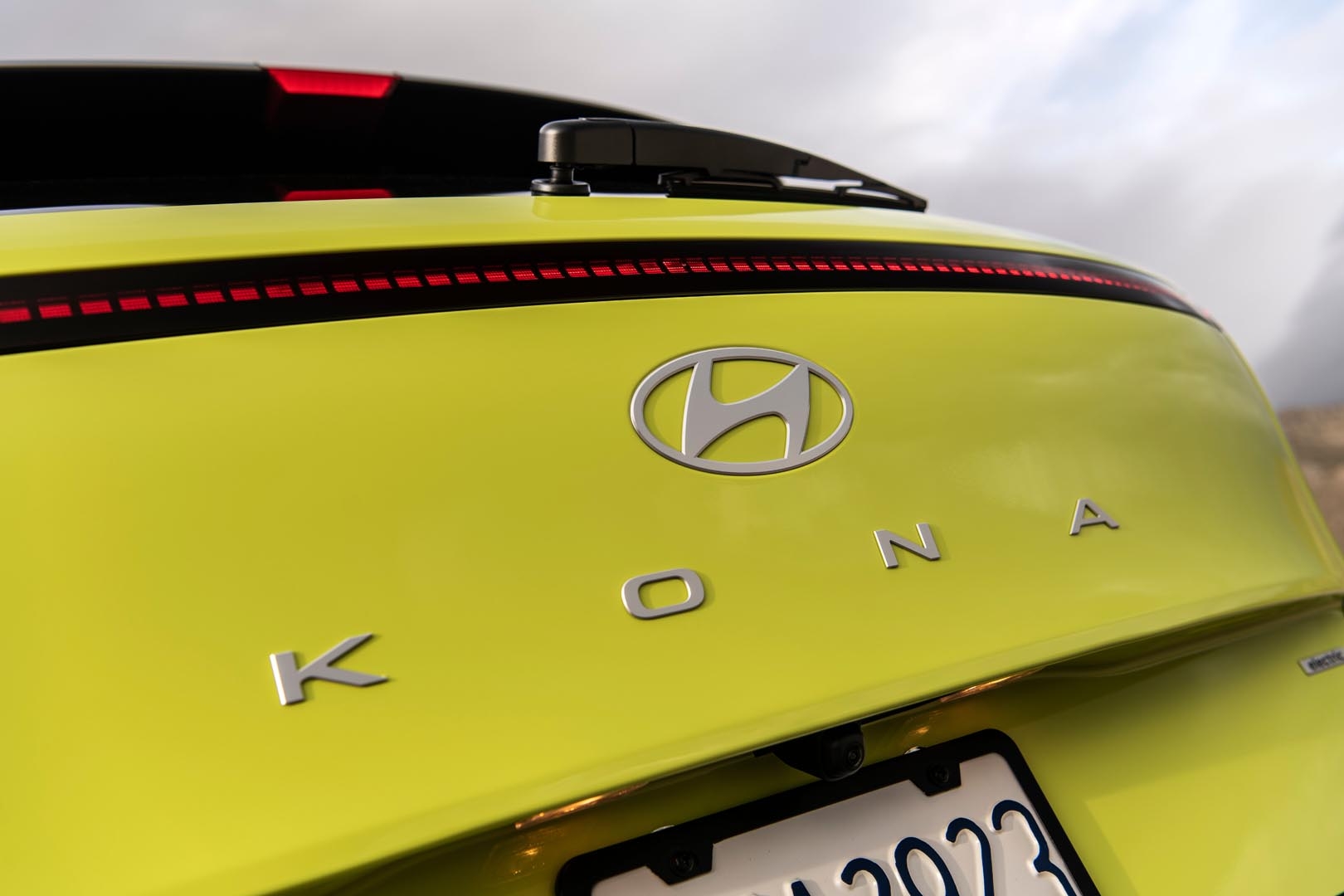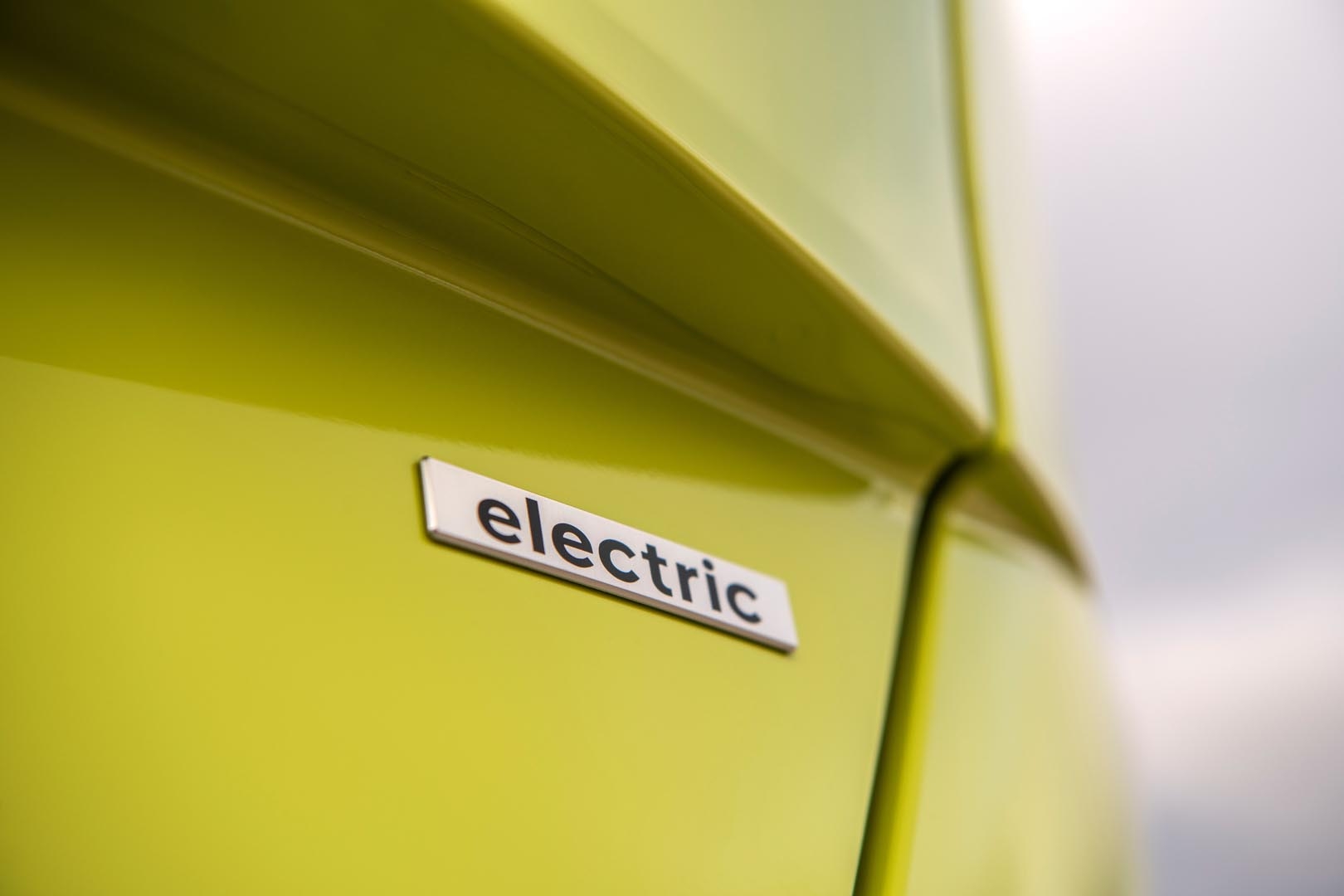
HYUNDAI Kona électrique 2024
5 highlights on a rightfully successful EV
Pros and cons
Pros
- Softer ride
- Expanded cabin
- Better soundproofing
- Well-designed controls
- Reasonable price for an EV
- Standard heat pump
Cons
- Muddier handling
- Unsupportive seats
- Driving position too high
- Steering wheel that hides gauges
- Quirky fast charging
- Subpar visibility
Overview
The redesigned Kona EV landed on our shores early in 2024, a few months behind its gas-powered counterpart. It has the same edgier lines, same expanded cabin . . . and pretty much the same specs, including charging, drivetrain, and range—now a claimed 420km instead of 415.
Check out the Evaluation section to find out what our experts think of the electric version in five highlights.
For this second generation, Hyundai says it started by designing the electric version of this small crossover, then derived the gas version. But the new Kona actually uses the same platform as the Hyundai Elantra, which only comes with a combustion or hybrid engine. The Kia Niro is derived from the same set, with hybrid, plug-in hybrid, and 100% electric variants. All of them come in front-wheel-drive versions only.
Whatever Hyundai is trying to claim, the Kona EV isn’t playing in the same league as, say, the IONIQ 5 or Kia EV6, whose platform is exclusively for electric vehicles.
No doubt Hyundai did what it had to do to keep the Kona relatively affordable. Despite an increase of nearly $2,000, the Preferred version remains one of the cheapest 100% electric vehicles—though it will still run you $48,948. Government rebates for EVs will take off $12,000 after taxes, falling to $9,000 next year with the gradual phaseout of Quebec provincial subsidies.
The Niro EV Wind (base model) is a few hundred dollars cheaper, but drivers and passengers will miss the heat pump, which heats the cabin better and limits the fall-off in range between −10°C and 10°C. Hyundai had the foresight to make the heat pump standard equipment on all its fully electric cars.
All Konas delivered in Canada come from South Korea.
Verdict
The Kona EV has lost none of its popularity since the redesign. Being one of the most affordable EVs certainly doesn’t hurt, but it’s not the whole story. The interior is now roomy enough for day-to-day family use, the attention to detail is unmistakable, and driveability is noticeably more refined. The relatively slow fast charger, at least under anything but optimal conditions, may however neutralize some of the thrill of the open road.
Evaluation
More room at last, but watch those seats
The first generation Kona’s backseats were so small it was tempting to call it a 2+2 crossover. Hyundai has largely solved the problem by stretching the wheelbase and reducing the slope of the roof. Stockier folks might still find it cramped, but for a family whose kids aren’t entirely full-grown, the Kona is now up to the job. Cargo space, especially with the seat backs up, is more in line with reality, having been lengthened and widened.
Unfortunately the poor seat support hurts front passenger comfort. Even with the Ultimate’s power lumbar support for the driver, our two testers complained that the concave seatbacks made them hunch over. They were also put off by the short bottom cushion, which was weirdly high as well. Passenger height adjustment is only available on the priciest version. The low, flat backseats do their jobs, but in the most basic way.
Strange range calculations
Natural Resources Canada (NRCan) rates Kona’s combined energy consumption at 18.1kWh/100km, equivalent to 2L/100km. At the end of our test week at the end of May, the trip computer displayed 17.3kWh/100km. Two thirds of the kilometres we travelled, however, were on the highway, where the official rating is 20.3kWh/100km.
Using a rule of three and our consumption, we get a range of only 375km on a full 64.8kWh battery charge, but NRCan lists the range at 420km. It’s hard to explain the difference.
It wasn’t till we got to drive the same Kona EV two weeks later at the Automobile Journalists Association of Canada’s EcoRun that we managed to beat its theoretical range. The EcoRun is an annual eco-driving event that shows how techniques like accelerating more slowly and not speeding can get you farther and reduce emissions. And by applying strategies like those on the back roads of Centre-du-Québec, we managed to ratchet our energy consumption down to 14.5kWh/100km—enough for a 446km range. And we did it with the air conditioning on, with temperatures of over 30°C outside!
Not-so-fast fast charging
Our road test included two fast-charging sessions. The first was done at an Electric Circuit 50kW charger and the second at a 100kW charger, which is the maximum this year’s Kona EV can handle. Both charges were done after driving on the highway with the battery at about 60%.
To our surprise, the average charging speed was higher at the less powerful charger! That charger delivered about 44kWh up to 80% capacity, while the 100kWh charger averaged 35kWh with a brief peak of 41 kWh. The second charge, which took 31min to go from 58 to 81%, casts doubt on Hyundai’s claimed ability to go from 10 to 80% in just 43min.
According to a co-worker and stats wizard who drives an electric car and has looked into it all, the Kona EV’s battery has to be hot enough before it can handle its maximum rated power. That means you’ll need to precondition the battery for a while before you stop, which will reduce your range a little. Preconditioning mode is accessed on the centre screen, and you can be sure we’ll try it next time we test an EV from Hyundai group.
Softer but flabbier
The previous Kona was notable for its sporty handling, something of a rarity for a subcompact SUV. Even the electric version had some pizazz, despite carrying some extra weight. The price however was a firm ride that could get downright harsh on rough roads.
Hyundai apparently got the message. While not perhaps as comfortable as a Subaru Crosstrek, the Kona shields its occupants from bumps better than a Mazda CX-30 or Chevrolet Trailblazer, while filtering out road noise better than it used to. That smoothness however has robbed it of some of the agility that formerly made it fun to drive. Lighter steering and tires with lower rolling resistance also have that effect.
And it’s all worse instead of better for the electric version, which contrasts with other models equipped with a heavy battery that lowers the centre of gravity. All of which strengthens our belief that the Kona EV is just an electrified version of the gas-powered original, whatever Hyundai claims.
Safety features
- Antilock brakes with electronic brake-force distribution and brake assist
- Stability and traction control
- Hill-start assist
- Front airbags
- Front and rear side airbags
- Side curtain airbags
- Front seat belts with pretensioners
- Five adjustable head restraints (fixed in rear on Essential and Preferred)
- Rear occupant alert
- Backup camera
- Tire pressure monitor
- Forward collision warning
- Forward automatic emergency braking with pedestrian, cyclist, and junction-turning detection
- Lane departure alert with automatic steering assist
- Active lane control
- Auto high beam
- Blind-spot monitoring with automatic steering assist
- Rear cross-traffic collision-avoidance assist
- Adaptive cruise control
- Rear safe exit warning
- Front, rear, and side parking sensors, rear automatic emergency braking, and surround camera system (standard on Ultimate, not available on Preferred)
Crash test results
National Highway Traffic Safety Administration
Overall score: Not tested
Frontal impact: Not tested
Side impact: Not tested
Rollover resistance: Not tested
Insurance Institute For Highway Safety
Moderate overlap frontal impact: 4 / 4
Small overlap frontal impact: 4 / 4
Side impact: 4 / 4
Rear impact: Not tested
Roof strength: Not tested
IIHS Top Safety Pick
